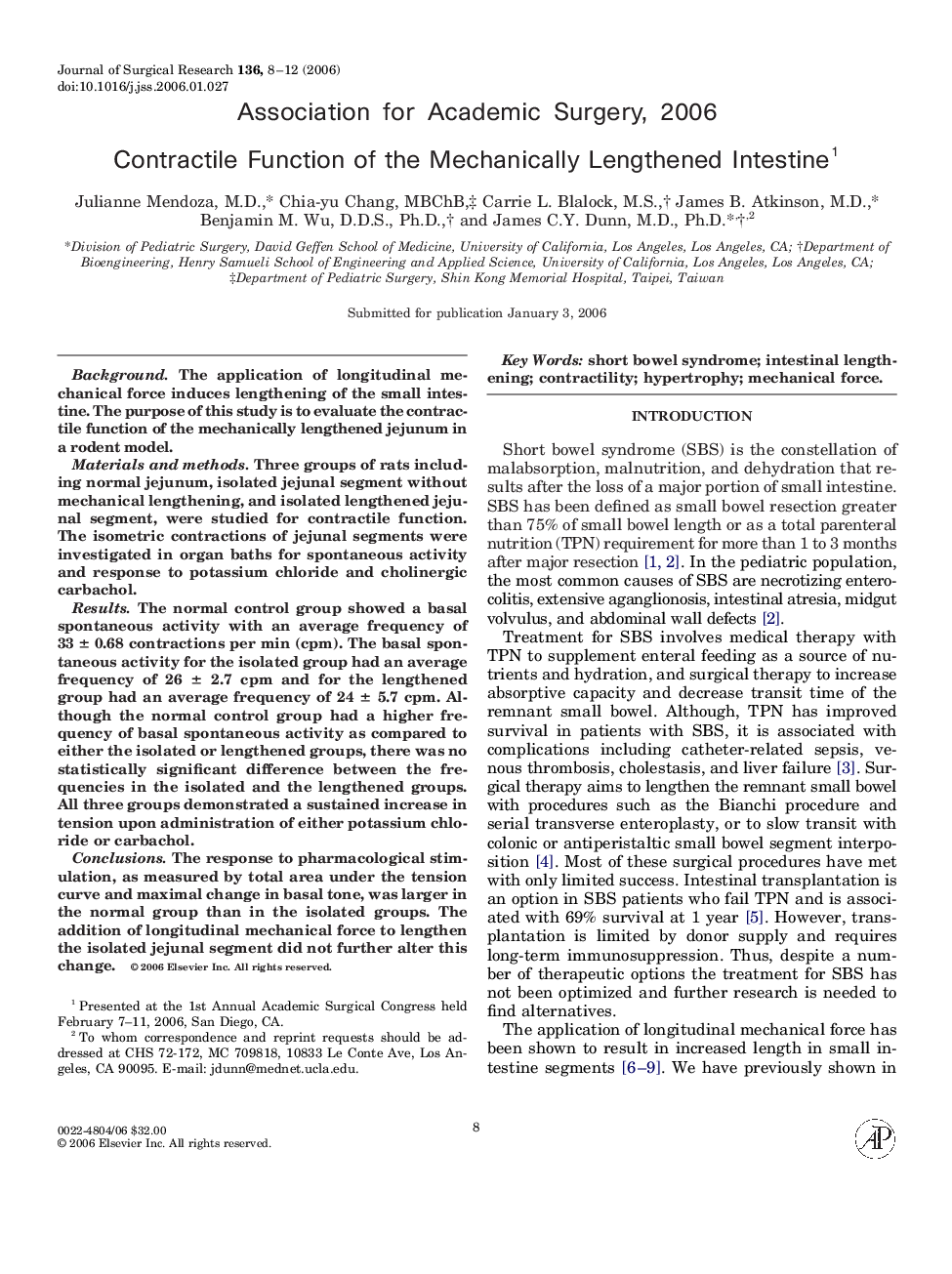| Article ID | Journal | Published Year | Pages | File Type |
|---|---|---|---|---|
| 4304746 | Journal of Surgical Research | 2006 | 5 Pages |
BackgroundThe application of longitudinal mechanical force induces lengthening of the small intestine. The purpose of this study is to evaluate the contractile function of the mechanically lengthened jejunum in a rodent model.Materials and methodsThree groups of rats including normal jejunum, isolated jejunal segment without mechanical lengthening, and isolated lengthened jejunal segment, were studied for contractile function. The isometric contractions of jejunal segments were investigated in organ baths for spontaneous activity and response to potassium chloride and cholinergic carbachol.ResultsThe normal control group showed a basal spontaneous activity with an average frequency of 33 ± 0.68 contractions per min (cpm). The basal spontaneous activity for the isolated group had an average frequency of 26 ± 2.7 cpm and for the lengthened group had an average frequency of 24 ± 5.7 cpm. Although the normal control group had a higher frequency of basal spontaneous activity as compared to either the isolated or lengthened groups, there was no statistically significant difference between the frequencies in the isolated and the lengthened groups. All three groups demonstrated a sustained increase in tension upon administration of either potassium chloride or carbachol.ConclusionsThe response to pharmacological stimulation, as measured by total area under the tension curve and maximal change in basal tone, was larger in the normal group than in the isolated groups. The addition of longitudinal mechanical force to lengthen the isolated jejunal segment did not further alter this change.
